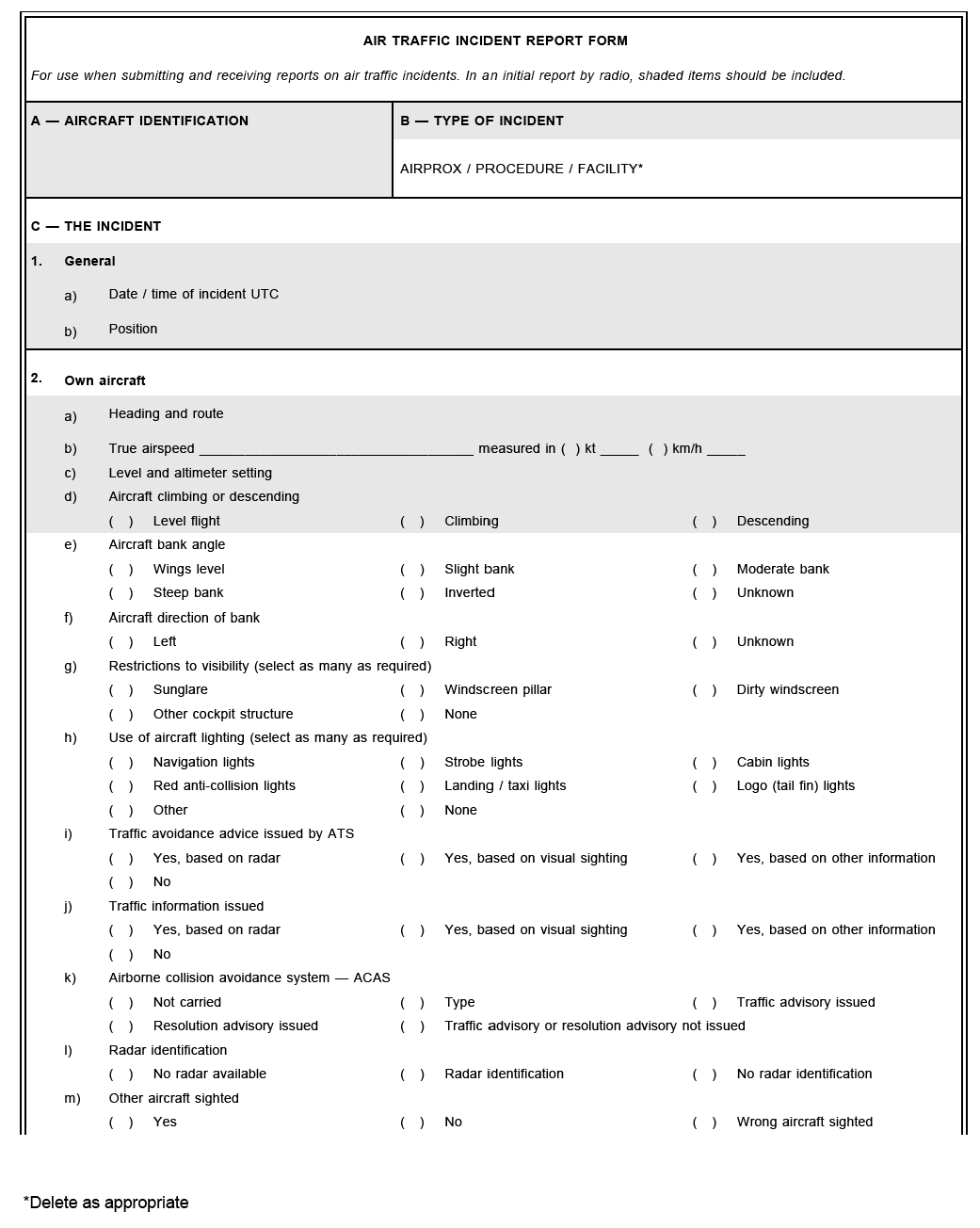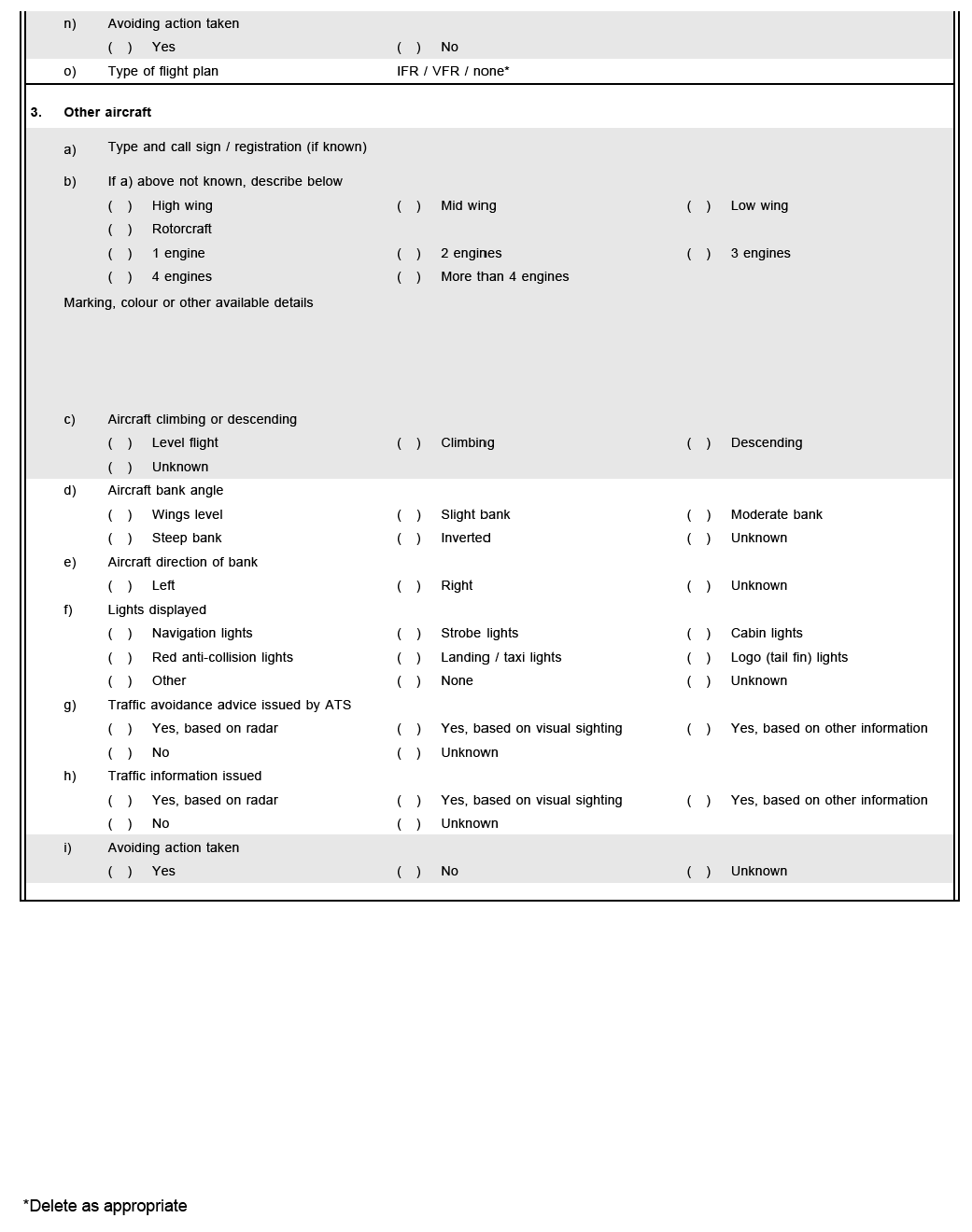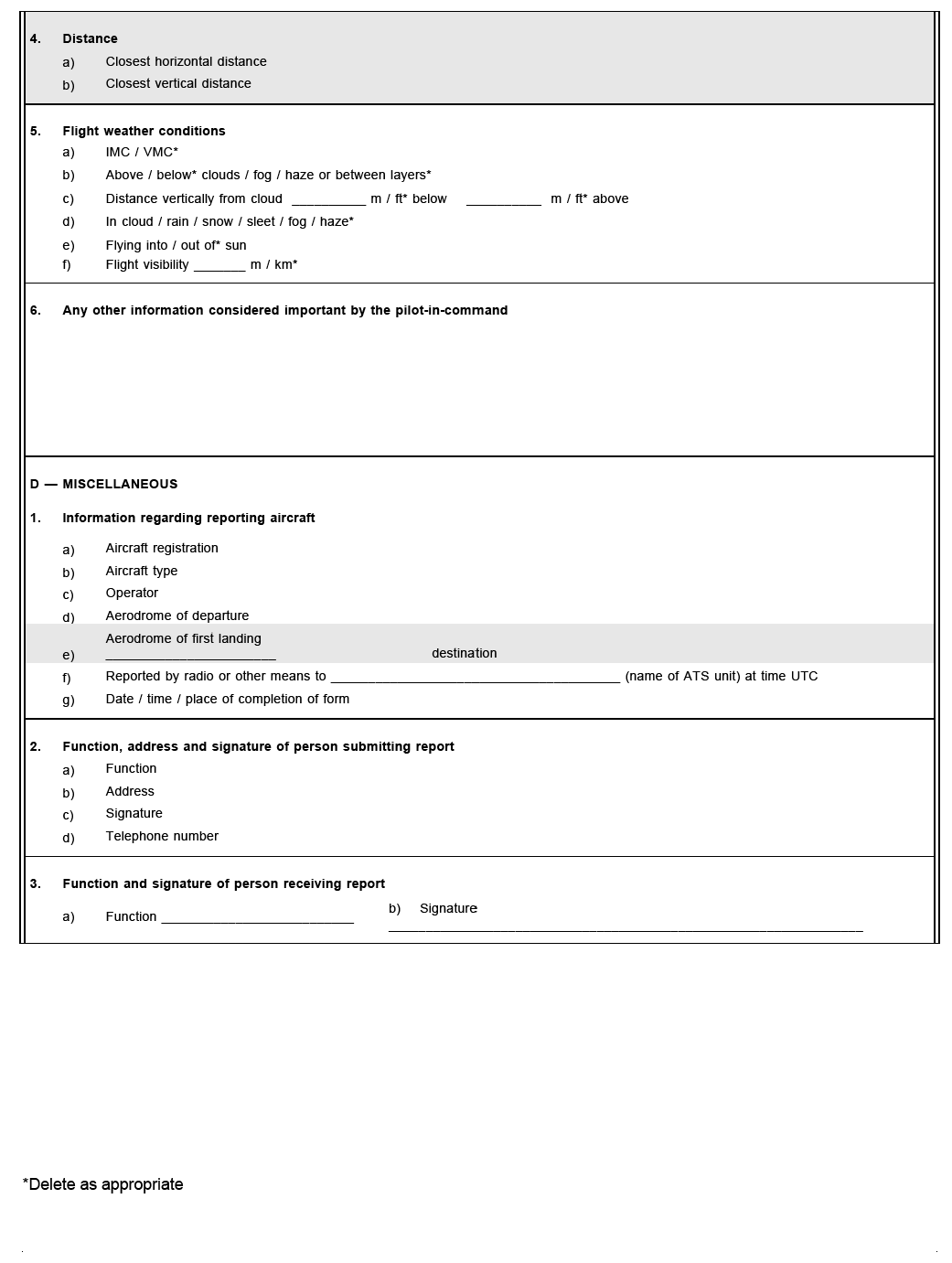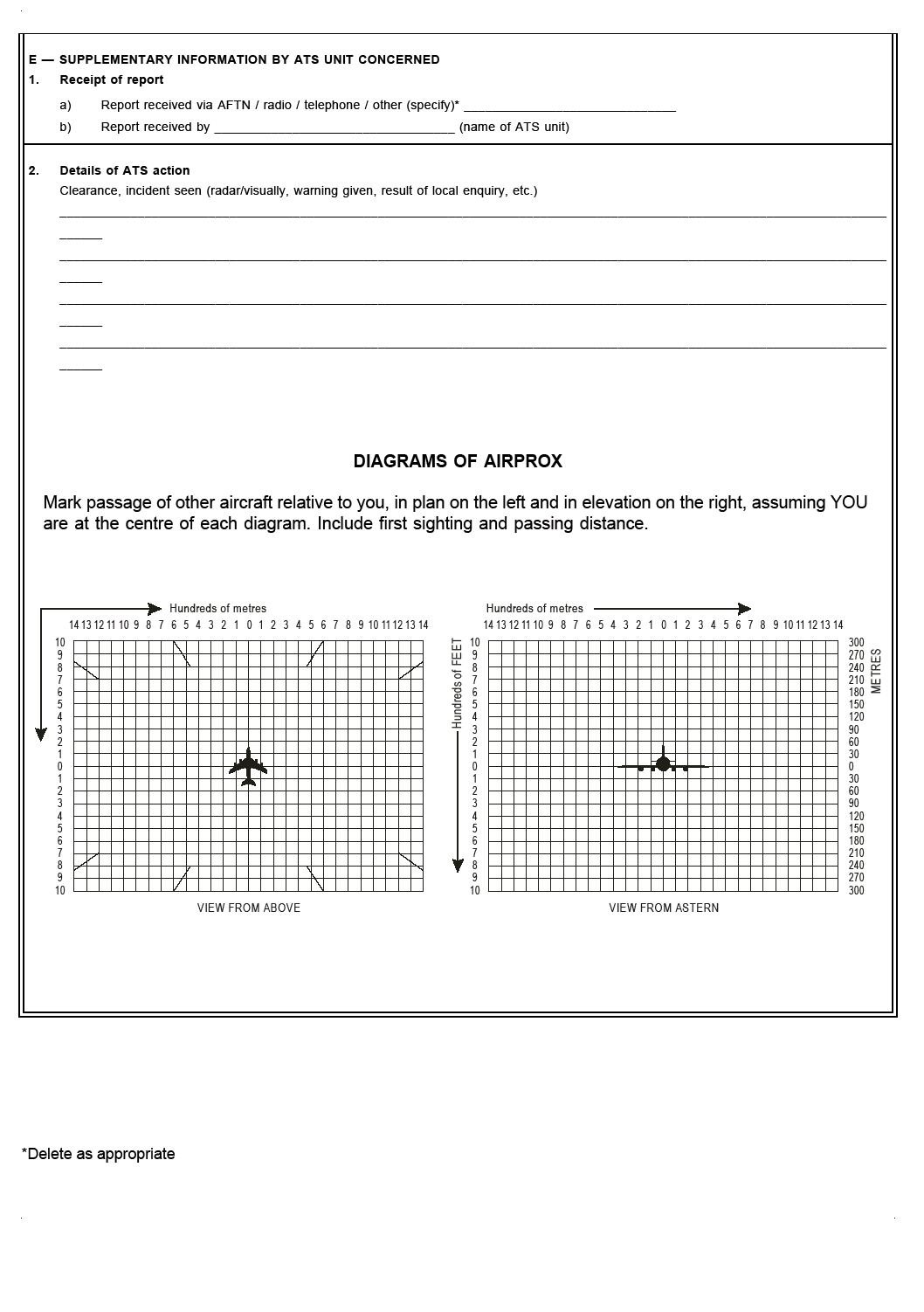ENR 1.14 AIR TRAFFIC INCIDENTS
1.14.1. Definition of air traffic incidents
1.14.1.1 “Air traffic incident” is used to mean a serious occurrence related to the provision of air traffic services, such as:
1.14.1.1.1 Aircraft proximity (AIRPROX);
1.14.1.1.2 Serious difficulty resulting in a hazard to aircraft caused, for example, by:
1.14.1.1.2.1 Faulty procedures
1.14.1.1.2.2 Non-compliance with procedures, or
1.14.1.1.2.3 Failure of ground facilities.
1.14.1.2 Definitions for aircraft proximity and AIRPROX.
1.14.1.2.1 Aircraft proximity is a situation in which, in the opinion of the pilot or the air traffic services personnel, the distance between aircraft, as well as their relative positions and speed, has been such that the safety of the aircraft involved may have been compromised. Aircraft proximity is classified as follows:
1.14.1.2.1.1 Risk of collision. The risk classification of aircraft proximity in which serious risk of collision has existed.
1.14.1.2.1.2 Safety not assured. The risk classification of aircraft proximity in which the safety of the aircraft may have been compromised.
1.14.1.2.1.3 No risk of collision. The risk classification of aircraft proximity in which no risk of collision has existed.
1.14.1.2.1.4 Risk not determined. The risk classification of aircraft proximity in which insufficient information was available to determine the risk involved, or inconclusive or conflicting evidence precluded such determination.
1.14.1.2.1.5 AIRPROX. The code word used in an air traffic incident report to designate aircraft proximity.
1.14.1.3 Air traffic incidents are designated and identified in reports as follows:
| Type | Designation |
|---|---|
Air traffic incident | Incident |
as a) above | AIRPROX (aircraft proximity) |
as b) 1) and 2) above | Procedure |
as b) 3) above | Facility |
1.14.2. Use of the Air Traffic Incident Report Form (See model in the table below)
1.14.2.1 The Air Traffic Incident Report Form is intended for use:
1.14.2.1.1 By a pilot for filing a report on an air traffic incident after arrival or for confirming a report made initially by radio during flight.
Note: The form, if available on board, may also be of use in providing a pattern for making the initial report in flight.
1.14.2.1.2 By an ATS unit for recording an air traffic incident report received by radio, telephone or teleprinter.
Note: The form may be used as the format for the text of a message to be transmitted over the AFS network.
1.14.3. Reporting procedures (including in-flight procedures)
1.14.3.1 The following are the procedures to be followed by a pilot who is or has been involved in an incident:
1.14.3.1.1 During flight, use the appropriate air / ground frequency for reporting an incident of major significance, particularly if it involves other aircraft, so as to permit the facts to be ascertained immediately;
1.14.3.1.2 As promptly as possible after landing, submit a completed Air Traffic Incident Report Form;
1.14.3.1.2.1 For confirming a report of an incident made initially as in 1.14.3.1.1 above, or for making the initial report on such an incident if it had not been possible to report it by radio;
1.14.3.1.2.2 For reporting an incident which did not require immediate notification at the time of occurrence.
1.14.3.1.3 For confirming a report of an incident made initially as in 3.1.1 above, or for making the initial report on such an incident if it had not been possible to report it by radio;
1.14.3.1.4 For reporting an incident which did not require immediate notification at the time of occurrence.
1.14.3.2 An initial report made by radio should contain the following information:
1.14.3.2.1 Aircraft identification;
1.14.3.2.2 Type of incident, e.g. aircraft proximity;
1.14.3.2.3 The incident; 1. a) and b); 2. a), b), c), d), n); 3. a), b), c), i); 4. a), b);
1.14.3.2.4 Miscellaneous: 1. e).
1.14.3.3 The confirmatory report on an incident of major significance reported by radio or the initial report on any other incident should be submitted to Civil Aviation Administration, or to the ATS Reporting Office located at Sal Island / Amilcar Cabral aerodrome. The pilot should complete an air traffic form supplementing the details of the initial reports as necessary.
Note: Where there is no ATS Reporting Office, the report may be submitted to another ATS unit.
1.14.4. Purpose of reporting and handling of the form
1.14.4.1 The purpose of the reporting of aircraft proximity incidents and their investigation is to promote the safety of aircraft. The degree of risk involved in an aircraft proximity incident should be determined in the incident investigation and classified as “risk of collision”, “safety not assured”, “no risk of collision” or “risk not determined”.
1.14.4.2 The purpose of the form is to provide investigation authorities with as complete information on an air traffic incident as possible to enable them to report back, with the least possible delay to the pilot or operator concerned, the result of the investigation of the incident and, if appropriate, the remedial action taken.




| Instructions for the completion of the Air Traffic Incident Report Form | |
|---|---|
| Item | |
| A | Aircraft identification of the aircraft filing the report. |
| B | An AIRPROX report should be filed immediately by radio. |
| C1 | Date / time in UTC and position in bearing and distance from a navigation aid or in LAT / LONG. |
| C2 | Information regarding aircraft filing the report, tick as necessary. |
| C2 c) | E.g. FL 350 / 1013 HPA or 2500 FT / QNH 1007 HPA or 1200 FT / QFE 998 HPA. |
| C3 | Information regarding the other aircraft involved. |
| C4 | Passing distance - state units used. |
| C6 | Attach additional papers as required. The diagrams may be used to show aircraft’s positions. |
| D1 f) | State name of ATS unit and date / time in UTC. |
| D1 g) | Date and time in UTC. |
| E2 | Include details of ATS unit such as service provided, radio - telephony frequency, SSR Codes assigned and altimeter setting. Use diagram to show the aircraft’s position and attach additional papers as required. |